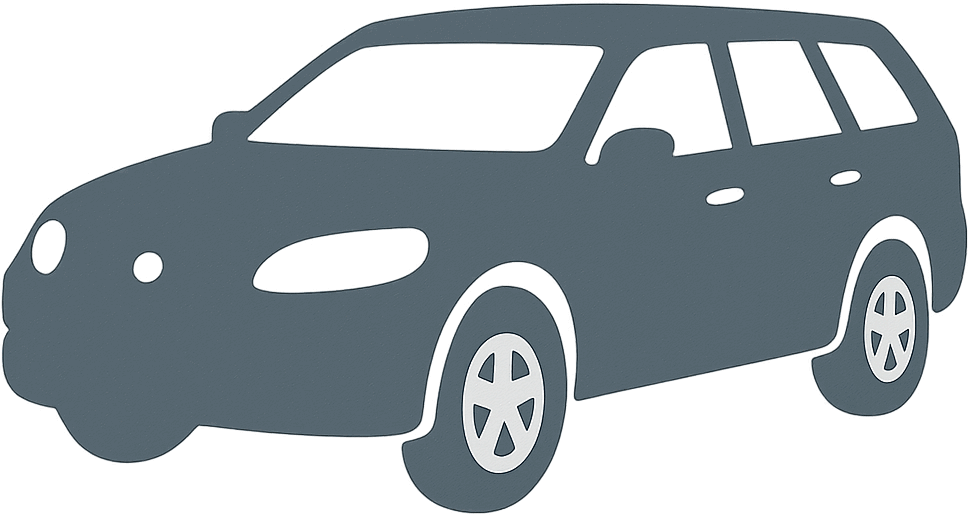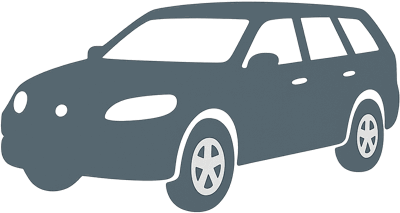 1976 Moskvich 2137 Combi Dimensions, Size & Specs
1976 Moskvich 2137 Combi Dimensions, Size & Specs
Measurements of the 1976 Moskvich 2137 Combi, engineered for optimal performance and comfort
| Dimensions | |
|---|---|
| Length: | 4210 mm165.7 in13.8 ft |
| Width: | 1550 mm61.0 in5.1 ft |
| Height: | 1270 mm50.0 in4.2 ft |
| Weight Specifications | |
| Curb Weight: | 1120 kg2469 lbs |
| Tire Specifications | |
| Tire Size: |
|
The Moskvich 2137 Kombi, produced from 1976 to 1987, is a classic Soviet-era station wagon known for its utilitarian design and compact dimensions. Measuring 4210 mm (165.7 inches) in length, 1550 mm (61 inches) in width, and a notably low height of 1270 mm (50 inches), the 2137 Kombi combines practicality with a relatively slim profile. It weighs 1120 kg (2469 lbs) curb weight, which is modest for a vehicle of its class, making it manageable and efficient for daily use. Designed on the foundation of Moskvich's reliable engineering, the 2137 Combi was tailored for versatility and family transport in the Soviet Union and Eastern Europe. With its 165/80 R13 tire size, the vehicle balanced ride comfort and road grip effectively. Despite its relatively simple and boxy station wagon aesthetics, the Moskvich 2137 Kombi remains a significant historical example reflecting automotive trends of the late 1970s to 1980s within its region. This modestly sized wagon offered decent interior space and cargo capacity, tailored for drivers seeking a practical and durable family car during its production era.
Discover the standout features that make the 1976 Moskvich 2137 Combi a leader in its class
Have a question? Please check our knowledgebase first.
The Moskvich 2137 Kombi, produced between 1976 and 1987, features a length of 4210 mm (165.7 inches), a width of 1550 mm (61.0 inches), and a height of 1270 mm (50.0 inches). These compact dimensions contribute to its maneuverability as a station wagon, making it well-suited for urban and suburban driving while maintaining a classic vintage profile.
The curb weight of the Moskvich 2137 Kombi is approximately 1120 kg (2469 lbs). This relatively light weight for a station wagon of its size helps improve fuel efficiency and ease of handling, especially when driving in city traffic or narrow country roads. The lighter curb weight also positively impacts acceleration and braking performance, contributing to a more responsive driving experience.
Yes, the Moskvich 2137 Kombi fits comfortably into a standard residential garage. With a length of 4210 mm (13.8 feet), width of 1550 mm (5.1 feet), and a height of 1270 mm (4.2 feet), it is smaller than many modern vehicles, making parking and storage generally hassle-free. The compact dimensions allow ample clearance in typical garage spaces designed for passenger cars.
The Moskvich 2137 Kombi's width of 1550 mm (61.0 inches) and height of 1270 mm (50.0 inches) are on the narrower and lower side compared to many Western station wagons from the 1970s and 1980s, which tended to be wider for passenger comfort and cargo capacity. This compactness reflects its design for the Soviet market, focusing on practical transportation and fuel efficiency rather than spaciousness, making it more maneuverable in tight urban environments.
The Moskvich 2137 Kombi is equipped with 165/80 R13 tires. This tire size balances ride comfort and handling stability on varying road surfaces. The relatively narrow width of the tires complements the car's light curb weight and narrow body, promoting better fuel efficiency and manageable road grip, though it may impact traction in very wet or slippery conditions compared to wider, more modern tires.
While the Moskvich 2137 Kombi's external dimensions are compact (4210 mm long and 1550 mm wide), its station wagon design optimizes interior space for passengers and cargo. The relatively low height of 1270 mm (50.0 inches) limits vertical headroom, but the wagon body style allows for a versatile cargo area, making it practical for families or transporting goods despite its modest size compared to larger wagons.
Compared to earlier Moskvich models, the 2137 Kombi introduced a more modern and slightly larger station wagon body. The length and width were optimized for improved interior space without drastically increasing the overall footprint. While retaining the classic Moskvich aesthetic, it represented an evolution toward functionality and efficiency, with a somewhat lower profile height contributing to better aerodynamics and a sportier look relative to bulkier predecessors.
The Moskvich 2137 Kombi holds its own among contemporaneous European station wagons by delivering a compact, lightweight design tailored for practicality and economy. While it may lack some of the refinement, power, and interior space found in Western European models, its simplicity and moderate dimensions (4210 mm length, 1550 mm width) enabled ease of driving and maintenance. It appeals mainly to those valuing durability and classic style over luxury or advanced features.
Yes, the Moskvich 2137 Kombi's compact dimensions—4210 mm long, 1550 mm wide, and 1270 mm tall—make it well-suited for daily urban commuting. Its size facilitates easy parking, navigating narrow city streets, and handling tight turns. The relatively light weight enhances fuel efficiency and agility, ideal for stop-and-go traffic situations, while the station wagon design offers useful cargo space for everyday errands or transporting items.
While exact cargo volume data for the Moskvich 2137 Kombi is not commonly documented, its station wagon body style maximizes usable interior space over a similarly sized sedan. With its 4210 mm length and extended rear design, the Kombi can accommodate larger items and increased luggage space, making it practical for transporting goods or family gear. The vehicle balances passenger accommodation with cargo usability, a hallmark of station wagons in this era.
Discover similar sized cars.

| Production: | 1976-1987 |
|---|---|
| Model Year: | 1976 |
| Length: | 4210 mm165.7 in |
| Width: | 1550 mm61.0 in |
| Height: | 1270 mm50.0 in |
